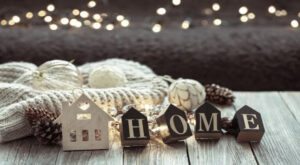Tips to Keep your Home Safe During the Winter Months

Winter is upon us and this creates a whole new host of problems when it comes to keeping homes in good working order and avoidance of seasonal damages and claims. Here is a simple checklist of helpful tips and tricks to keep your home safe this Winter Season:
Winterizing The Outside Of Your Home
Clear Your Gutters
Check your gutters to make sure that they are clear of leaves and debris so that they don’t collect water. Water trapped in eaves over winter can cause damage when temperatures drop and ice forms. Additionally, ensure that gutters are securely attached to the house to avoid breakage during heavy snowfall.
Caulk Any Cracks Around the Outside Of Your Windows And Doors
Caulk around the windows and use foam outlet protectors to stop cold air from entering your home. Please note, most of the heat loss takes place via openings in the attic. Check to make sure you have enough insulation.
Weatherproof
Weather stripping or installing storm doors and windows will prevent cold air from getting into your home as well as heat escaping, which will also reduce power bills.
Clean And Cover Your Air Conditioning Unit
Make sure that your air conditioning unit is protected from the elements by covering it during the winter months. If you have a window mounted air conditioning unit, remember to remove it before the cold weather begins.
Always Clear Snow and Ice To Reduce The Risk Of Falling
Make sure to shovel and salt your driveway and walkways after every snowfall to reduce the risk of dangerous slip and falls.
Make Sure You Are Roof Ready
Snow, rain, ice, and wind can make it challenging for your home to withstand winter’s wrath. You can be proactive when it comes to winterizing your roof with a few key steps:
- Inspect the roof. Look for broken, frayed, curled or missing shingles, clogged valleys, damaged flashing or deterioration.
- Clear leaves, pine needles, dirt, and other accumulated debris from the roof.
- Cut back overhanging branches to prevent damage to shingles and gutters.
- Install snow guards.
- Check the attic and ceilings for staining from water leakage. While you’re up there, make sure the attic is properly ventilated to prevent mold and mildew.
- If you live in an area that’s prone to snow, invest in a snow roof rake.
Stock Up
It is important to be prepared for bad weather and storms ahead of time. Here is a list of essentials that are good to stock up on ahead of time.
- Snow Shovel
- Ice Scraper
- Salt
- Flashlights and extra batteries
- Emergency car kit (Extra blankets, radio, ice scraper, car charger, first aid kit, jumper cables)
- Water and non-perishable foods
- Extra pet food
Winterizing The Inside Of Your Home
Protect Your Pipes
Insulate pipes that run through your attic and other non-heated areas. You will want to make sure you do this on any outdoor pipes as well.
Drip The Faucets
Drip your faucets on especially cold days. This can help prevent and avoid freezing and bursting of pipes.
Unplug Devices
Disconnecting appliances such as TV’s, computers, or even coffee machines will help avoid using unnecessary energy. This will help protect against electrical surges in the event a winter power outage occurs.
Avoid Clogging
Toilets are prone to clogging, which means homeowners must be aware of what they are flushing. Paper towel, feminine hygiene products, and baby wipes are huge contributors to toilet clogging and should only be disposed of in a garbage bin. It is important to know where your toilets shut off valve is. If you ever experience clogging, remove the lid, and pull up the float or close the flapper. This will stop water from flowing into the bowl and onto the floor.
Check For Cracks
Check for cracks near the indoor frames of windows or doors. If you see them, caulk them just as you would outside. Set up draft guards on any doors that go outside, this will help with loss of warm air and entering of cold air.
Ensure That All Smoke Detectors and Carbon Monoxide Alarms Are in Working Condition
When testing, ask a member of your household to stand in an area of the house that is farthest from the alarm. This ensures that the alarm can be heard adequately from all areas of the house. Press and hold the test button on your detector, after a few seconds the detector should emit a very loud alarm. If there is no sound, or the sound is weak then the batteries may need to be replaced.
Check Your Furnace Filter
Your furnace will function more efficiently with a clean filter. A dirty filter with trapped lint, pollen, dust, obstructs airflow and makes your furnace run longer to heat your home. Replace filters at least every three months.
Clear All Flammable Items from Around The Furnace
Clear out the area immediately surrounding the furnace, paying particular attention to ensure that flammable items are stored as far away from the furnace area as possible.
Service your Fireplace/Woodstove
Before lighting a fireplace or woodstove for the first time make sure that it has been cleared of any blockages. The chimney/flue should be cleaned to remove creosote buildup and checked for any structural issues that may have arisen over the months it was not in use.
Make Sure That Your Fire Extinguisher Is Full and Properly Pressurized
Household fire extinguishers can have life spans over a decade long. However, many of us may not know exactly when we made the purchase. To ensure that your fire extinguisher is operational, look at the pressure gauge on the side and if the needle is within the green area then the fire extinguisher is still usable.
